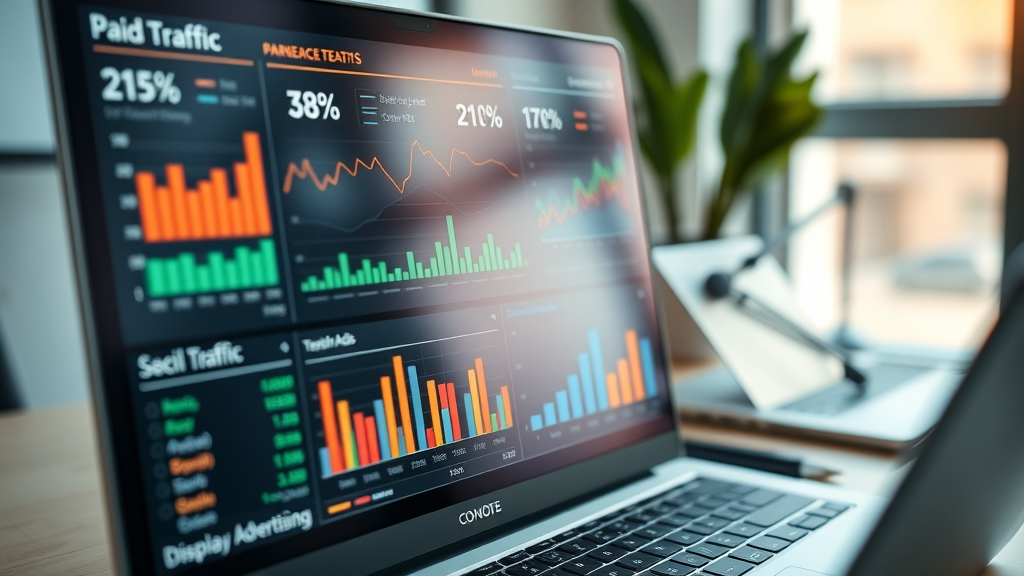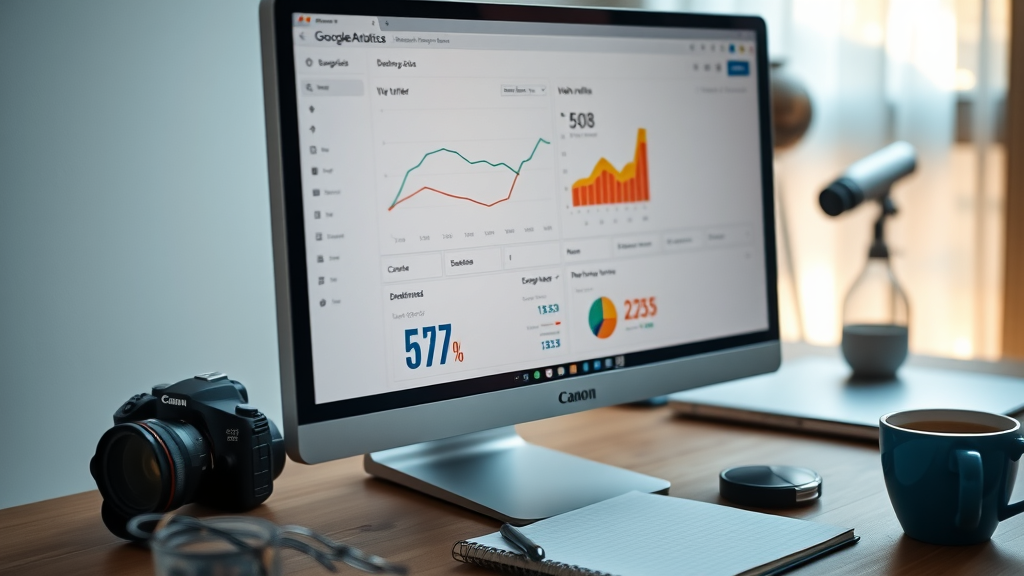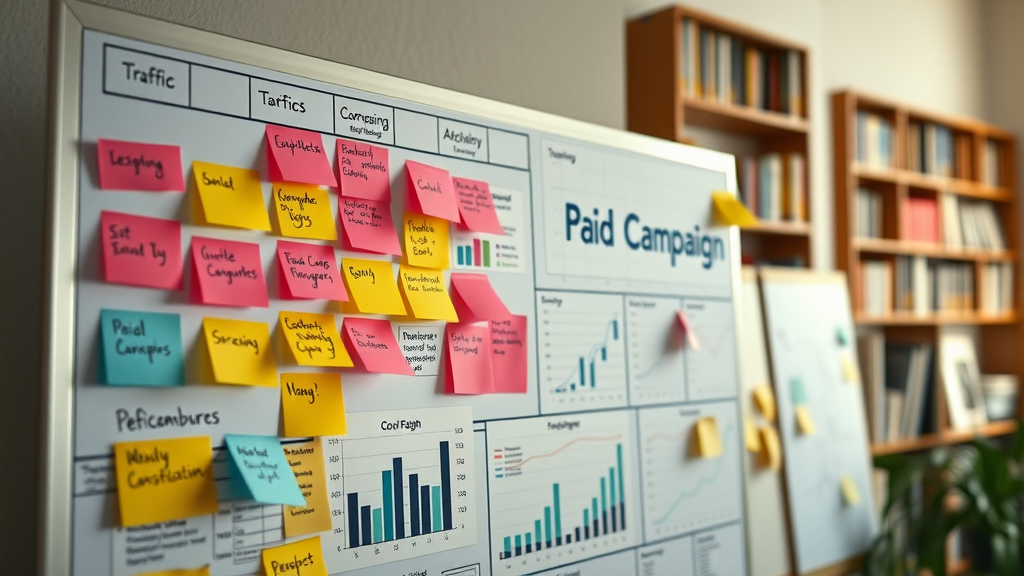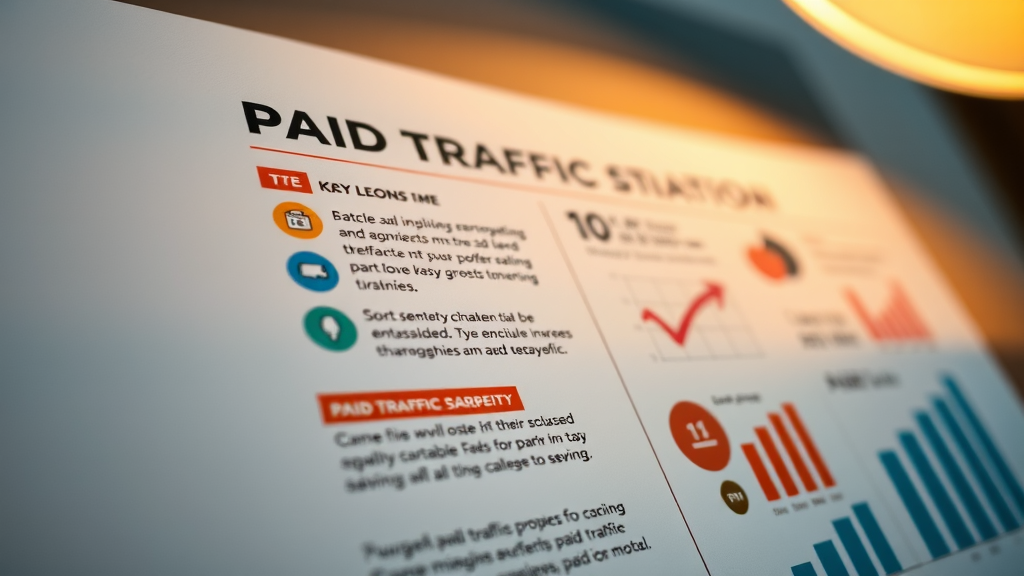Did you know that marketers waste up to 37% of their digital budgets on inefficient ad targeting techniques? Most businesses don’t realize just how much ad spend is quietly slipping through the cracks. If you’re tired of burning through your budget for lackluster results, this guide reveals actionable ways to solve ad targeting techniques and maximize every dollar. Discover the Reality: Why Ad Targeting Techniques Are Costing You More Than You Realize For many brands, ad targeting techniques are a double-edged sword—capable of driving results, but just as likely to waste valuable ad spend if not managed properly. Behind every digital ad campaign, a complex world of targeting methods determines who sees your ads and when. When these strategies miss the mark, your budget bleeds, and your return on investment suffers. Recent studies indicate that a staggering percentage of digital marketing budgets are lost to targeting inefficiencies. In the age of automation and big data, many advertisers rely on outdated or misapplied audience targeting, running the risk of showing ads based on irrelevant signals or broad criteria instead of leveraging granular insights. The challenge isn’t just in choosing the right targeting strategy—it's in continuously testing, optimizing, and aligning your ad content with your ideal target audience. “Marketers waste up to 37% of their digital budgets due to inefficient ad targeting techniques.” What You'll Learn About Effective Ad Targeting Techniques How to identify the right ad targeting methods for your audience
Ways to optimize ad campaigns
Different targeting strategies explained
How to leverage machine learning for contextual and behavioral targeting
Techniques to reduce wasted ad spend Understanding Ad Targeting Techniques: The Foundation of Successful Digital Marketing
What Are Ad Targeting Techniques? Ad targeting techniques are specialized methods used in digital marketing to deliver relevant ads to specific audiences. By narrowing down users based on demographic, behavioral, contextual, and psychographic attributes, marketers aim to ensure their digital ad campaigns reach potential customers who are most likely to engage and convert. Unlike traditional blanket advertising, modern targeting methods deploy advanced analytics and automation tools to show ads based on real data and user signals, making every impression more valuable. The right targeting approach aligns ad content with actual user intent, delivering ads to those who care about your offerings. With the rapid growth of programmatic media buying and AI-driven platforms, understanding what makes a targeted ad effective is crucial. These techniques leverage first-party and third-party data, as well as tracking pixels, cookies, and machine learning, to build detailed user profiles. The goal is to minimize wasted impressions and boost ad campaign performance by reaching the right person at the right time with the right message. Whether you operate in e-commerce, SaaS, or brick-and-mortar retail, adopting strategic ad targeting is essential in today’s crowded advertising landscape. The Role of Target Audience and Audience Targeting in Digital Marketing A central aspect of successful ad targeting techniques is a clear understanding of your target audience. Defining who you want to reach with your ads allows you to build more relevant campaigns, from the creative used to the platforms chosen. Audience targeting in digital marketing often involves segmenting users based on their interests, behaviors, locations, and even device types. The more precisely you outline your audience profile, the more effective your digital advertising becomes—reducing ad spend on uninterested users and increasing ROI. Strategic audience targeting leverages data to anticipate the needs of potential customer segments and deliver ad content that resonates. Marketers must continually update their targeting strategies as digital behavior shifts, ensuring that the methods used remain aligned with evolving audience preferences. In essence, audience targeting is at the core of all effective digital marketing, dictating how and where ads should be shown for maximum impact and minimal waste. Why Proper Ad Targeting Methods Matter for Businesses Inaccurate or outdated ad targeting methods can be costly for businesses, leading to poor audience engagement and low conversion rates. By honing your ad targeting techniques, you can ensure every dollar of your ad spend works harder, focusing your budget on users most likely to become customers. Proper targeting prevents ad fatigue, keeps your messaging fresh, and builds trust by avoiding irrelevant ad placements. Businesses that prioritize data-driven targeting strategies are better positioned to scale their digital campaigns and adapt to the changing digital marketing ecosystem. This means routinely reviewing performance, embracing machine learning tools, and integrating feedback for continuous improvement. In short, a strong approach to ad targeting directly impacts ROI, brand reputation, and market share—making it a non-negotiable focus for modern marketers. Types of Ad Targeting Techniques: A Comprehensive Overview
Demographic Targeting: Reaching the Right Age, Gender, and Income Groups Demographic targeting focuses on segmenting audiences according to fundamental characteristics like age, gender, income, education, and marital status. By understanding demographic data, businesses can craft relevant ads for specific groups—showing products designed for young adults to the right age range or tailoring messages to resonate with a particular gender. This targeting method is especially useful for industries where products and services closely align with specific demographics, such as healthcare, fashion, automotive, or personal finance. Success with demographic targeting requires access to accurate first-party data and regular updates to audience profiles. Marketers must avoid assumptions; for example, not every millennial spends the same way, nor does every income bracket respond similarly to ad campaigns. Instead, combining demographic signals with other forms of data—like behavioral or psychographic insights—yields higher ad relevance and minimizes wasted spend. Contextual Targeting: Aligning Ads with Relevant Content Using Machine Learning Contextual targeting employs machine learning algorithms to analyze page content and deliver ads that match the topic, format, or keywords of the environment in which they appear. For instance, an article about fitness gear would prompt relevant ads for sports apparel or wellness supplements. This approach ensures your message is not only seen but also appears organically within a user’s browsing session, thereby increasing engagement. The advantage of contextual targeting over behavioral targeting is its adaptability to privacy trends; since it doesn’t require tracking users across browse histories, it’s compliant with rising data privacy standards. Machine learning enables smarter contextual matching by interpreting visual, textual, and structural elements on webpages, ensuring your digital ad fits the right context without relying on invasive tracking. As consumer appetite for privacy grows, contextual targeting is becoming a go-to strategy for marketers looking for both compliance and effective ad campaigns. Behavioral Targeting: Harnessing User Data for Precise Ad Campaigns Behavioral targeting takes advantage of user behavioral data, such as past browsing history, search queries, purchase actions, and site visits. This highly precise targeting method allows businesses to show ads based on users’ actual interests and intent, rather than just their demographic background. Ads based on behavioral signals deliver a more personalized experience—showing a returning site visitor the products they browsed last week, or enticing a customer who abandoned a cart with a custom discount. The effectiveness of behavioral targeting depends on access to robust first- and third-party data and responsible management of personal information. While it can dramatically improve ad campaign performance and conversion rates, it also requires marketers to remain vigilant about privacy policies, opt-outs, and consent. When implemented ethically, behavioral targeting serves as one of the most powerful ad targeting techniques, producing relevant ads that drive measurable results. Geo-Targeting: Location-Based Ad Targeting Methods Geo-targeting enables advertisers to tailor messages based on a user’s real-time location, from country and city down to zip code. This strategy powers highly localized marketing—delivering coupons to users near a physical store, adjusting promotions during local events, or serving relevant ads in a user’s native language. For companies with brick-and-mortar outlets or region-specific offerings, geo-targeting reduces waste by focusing spend where it matters most. Modern geo-targeting utilizes a combination of device GPS, IP address, Wi-Fi signal, and mobile app data sources. Marketers must be mindful of consumer preferences and privacy, always providing value and context. By aligning ad content with real-world geography, geo-targeting bridges the gap between online awareness and offline action, steering potential customers toward conversions that matter for your business. Interest-Based and Psychographic Targeting Strategies Beyond basic demographics and behavioral triggers, interest-based and psychographic targeting strategies dig deeper into users’ hobbies, values, lifestyles, and opinions. This form of targeting uses data from social media activity, website engagement, app usage, and content consumption patterns to create highly specific audience segments. By understanding what motivates your potential customers—what they care about, how they spend their time, what brands they follow—you can devise creative ad campaigns that feel personally relevant and authentic. Interest-based targeting supports campaigns that engage niche segments or subcultures, while psychographic approaches can influence purchasing decisions by tapping into users’ attitudes and aspirations. Leveraging these strategies requires robust data analysis, strong storytelling, and creative assets tailored to each segment. When effectively executed, psychographic and interest-based targeting drive meaningful engagement, set your brand apart, and maximize the efficiency of your ad spend. How to Implement Successful Ad Targeting Techniques Without Wasting Budget
Step 1: Define and Analyze Your Target Audience The foundation of any effective targeted advertising campaign is a deep understanding of your target audience. Begin by developing detailed audience personas using first-party and third-party data, focusing on demographics, interests, pain points, and purchase behaviors. Ask: Who are your ideal customers? What motivates them to take action? Which channels do they frequent? This data-driven approach ensures your targeting strategies are based on real insights, not guesswork. Regularly update your audience definitions as trends shift, seasonality changes, or product offerings evolve. Utilizing audience analysis tools and analytics dashboards, evaluate engagement metrics and conversion paths to fine-tune your approach. The more you know about your audience, the more strategic and impactful your ad targeting techniques will become—driving higher conversions and reducing wasted spending on uninterested users. Step 2: Choose the Right Ad Targeting Method for Your Ad Campaign Selecting the best targeting method for your digital ad campaign depends on your objective, budget, and the nature of your products or services. Are you looking to build brand awareness, drive sales, or retarget site visitors? Each goal calls for a different set of ad targeting techniques—for example, demographic and interest-based targeting for broad awareness; behavioral and retargeting strategies for performance-focused campaigns. Compare platforms and tools to assess which targeting methods they offer. Experiment by A/B testing different ad sets, segmenting audiences, and tracking performance over time. Avoid putting all your budget into a single targeting strategy; instead, diversify your approach for maximum reach and conversion potential. Data from ongoing campaigns should inform future targeting decisions, enabling smarter allocation and improved results. Step 3: Use First-Party and Third-Party Data Efficiently First-party data—information collected directly from your customers and website visitors—is the cornerstone of precise and ethical ad targeting. It includes data from sign-ups, purchase history, engagement metrics, and CRM databases. Third-party data, sourced from external providers, can supplement your audience profiles with broader insights but must be used responsibly and in compliance with privacy laws. For optimal results, blend both data types to create holistic campaign strategies. First-party data enhances personalization and targeting accuracy, while third-party data extends your reach and identifies new prospects. Invest in analytics tools that unify data sources, making it easier to segment audiences, activate lookalike models, and uncover fresh targeting opportunities. Always prioritize data quality and transparency to build trust and deliver superior, relevant ads. Step 4: Integrate Machine Learning & Automation for Smarter Ad Spend Machine learning and automation have revolutionized modern ad targeting techniques, allowing for real-time analysis and optimization of large volumes of behavioral data. Algorithms can continuously adjust ad placements, creative, and bids to maximize results and minimize wasted budget. For example, platforms like Google Ads and Facebook Ads use machine learning to predict which users are most likely to click or convert, helping you set smarter ad spend parameters and improve overall campaign performance. To fully leverage these technologies, integrate automated bidding strategies, responsive ad formats, and predictive audience targeting models. Machine learning uncovers insights that manual analysis might miss, adapting to changes in user behavior and market dynamics at lightning speed. Embracing automation not only boosts ROI but frees your team to focus on strategy, creative development, and higher-value tasks instead of routine optimizations. Step 5: Monitor, Test, and Optimize Your Targeted Advertising Continuous monitoring and iterative testing are essential components of any successful ad targeting strategy. Use analytics dashboards to track your key metrics—click-through rates, conversion rates, cost per acquisition—and set up regular reviews to identify underperforming segments or ad creatives. Implement A/B testing to compare different targeting strategies, creative formats, or ad placements. Optimization doesn’t stop once your campaign is live. Make small tweaks to audience definitions, adjust your budget allocation, and experiment with new targeting approaches based on real-time data. Always be ready to pause or redirect spend from low-performing areas to those delivering the highest ROI. This agile approach to targeted advertising prevents wasted spend and ensures you’re always moving closer to your business goals. Table Comparing Ad Targeting Techniques Type of Targeting
Pros
Cons
Typical Costs
Best Use Cases Demographic
Easy to implement; broad reach; effective for age and gender-driven products
Can be too broad; may miss intent
Low to moderate
Brand awareness; basic segmentation Behavioral
Highly personalized; high conversion potential
Requires extensive data; privacy concerns
Moderate to high
Retargeting; e-commerce Contextual
Privacy-friendly; relevant ads based on content
Less personalized than behavioral
Moderate
Blog, news, and content-driven sites Geo-Targeting
Hyper-local reach; event-based campaigns
Limited for global products; dependence on accurate location
Moderate to high
Local business promotions Best Practices to Improve Ad Targeting Techniques and Minimize Budget Waste Regularly review and update your targeting strategies to align with audience preferences
Test multiple targeting methods to see which delivers the best ROI
Segment your audiences for greater ad relevance and impact
Use analytics and reporting to guide ongoing campaign optimization “Refining your ad targeting techniques is the key to unlocking higher conversion rates without overspending.” Watch the above video to see case studies of businesses optimizing their ad campaigns with advanced ad targeting techniques. Clear captions and graphics illustrate key strategies, before/after metrics, and expert testimonials. In this walkthrough, a digital marketing expert demonstrates step-by-step how to use advanced targeting methods, guided by real data, for superior ad campaign outcomes. People Also Ask: What are the 4 types of targeting strategies?
Answer: The four major types of targeting strategies in ad targeting techniques are undifferentiated (mass) marketing, differentiated (segmented) marketing, concentrated (niche) marketing, and micromarketing (individual or one-to-one marketing). Each strategy serves different business goals and audience sizes. People Also Ask: What is the 3 2 2 method of Facebook ads?
Answer: The 3 2 2 method is a Facebook ad strategy that involves running 3 ads with different creative elements, 2 targeting options, and 2 placements. This approach helps marketers quickly test and find the most effective combinations for ad targeting techniques.
People Also Ask: What are the 7 main types of advertising?
Answer: The seven main types of advertising are digital advertising, print advertising, broadcast advertising, outdoor advertising, social media advertising, direct mail, and experiential advertising. Each type can employ different ad targeting techniques for improved results.
People Also Ask: What are the different types of targeted advertising?
Answer: Types of targeted advertising include demographic targeting, geographic targeting, behavioral targeting, contextual targeting, interest-based targeting, retargeting, and psychographic (lifestyle/personality) targeting—all of which are key ad targeting techniques.
Advanced Ad Targeting Techniques: Machine Learning & Predictive Analytics
How Machine Learning Drives Smarter Contextual & Behavioral Targeting Machine learning has transformed how marketers deliver relevant ads to users based on both context and behavior. By processing vast amounts of data and identifying patterns, machine learning systems select the most appropriate targeting methods and optimize ad placements in real time. In contextual targeting, these algorithms scan page content, keywords, and user intent signals to serve highly relevant ads within milliseconds. Similarly, behavioral targeting benefits from machine learning’s ability to analyze previous site visits, clicks, and purchase behavior—adapting targeting strategies on the fly to maximize engagement and conversions. Automation is especially valuable as user privacy concerns grow and third-party cookies decline. With machine learning, marketers can use first-party data and contextual insights to maintain precision without relying on intrusive tracking. The result is smarter targeted ads, improved ROI, and a campaign process that’s both scalable and privacy-conscious. Predictive Analytics for Optimizing Ad Campaign Performance Predictive analytics uses historical data and modern modeling techniques to forecast future user actions and identify the most promising audiences. For ad targeting techniques, predictive analytics evaluates which users are likely to convert, which creative content resonates best, and the ideal timing for ads. By anticipating outcomes, marketers can fine-tune campaigns, allocate budget more efficiently, and minimize waste. Advanced platforms provide dashboards where marketers can test new hypotheses, automate campaign changes based on real-time data, and receive actionable performance recommendations. As digital marketing evolves, predictive analytics will play an increasing role in guiding targeting decisions and helping brands stay competitive with minimal wasted ad spend. Common Mistakes in Ad Targeting Techniques—and How to Avoid Them Over-reliance on outdated or inaccurate party data
Narrowly targeting the same small audience—missing new customer opportunities
Lack of continuous A/B testing or optimization
Poor budget allocation leading to overspending on low-performing segments
Neglecting analytics and failing to act on insights “Avoid setting and forgetting your targeted ad strategy—continuous testing and refinement are vital.” FAQs: Answering Your Questions About Ad Targeting Techniques How do I choose between contextual targeting and behavioral targeting? Contextual targeting matches ads to the content users are currently viewing, making it great for privacy compliance and real-time relevance. Behavioral targeting considers a user’s past actions, such as browsing or shopping history, to deliver personalized ads. Your choice depends on campaign goals: use contextual for broad relevance and compliance, or behavioral for deep personalization. How can machine learning improve my ad campaign ROI? Machine learning analyzes data faster and more accurately than manual methods, automatically optimizing audiences, bids, and ad placements for the highest-performing combinations. This technology enables dynamic adjustment based on real-time results, reducing wasted ad spend and improving conversion rates. Should I use first-party or third-party data for audience targeting? First-party data is more accurate, privacy-friendly, and personalized since it’s gathered from your own audience. Third-party data broadens reach but may lack precision. It’s best to prioritize first-party data for core targeting and supplement with high-quality third-party data to expand and enrich your audience profiles. What is the best way to optimize budget in targeted advertising? Continuously track campaign performance, split test different targeting methods and creatives, and reallocate budget to the highest-converting segments. Don’t hesitate to pivot strategies if data suggests new opportunities. Embracing automation and regular optimization is the key to maximizing ROI. Key Takeaways: Mastering Ad Targeting Techniques Without Budget Waste Evaluate all targeting strategies for each campaign
Leverage machine learning and analytics platforms
Prioritize continuous campaign optimization and A/B testing
Align ad targeting methods directly with your unique business and campaign goals Conclusion: Get Expert Help Optimizing Your Ad Targeting Techniques Ready to stop wasting budget on ineffective ad targeting techniques? Need Help? Call Digital Media Marketing at 1-586-997-0001 For more information read The Ultimate Guide to Paid Advertising: Strategies, Channels, and ROI-Boosting Tips.









 Add Row
Add Row  Add
Add 




Write A Comment